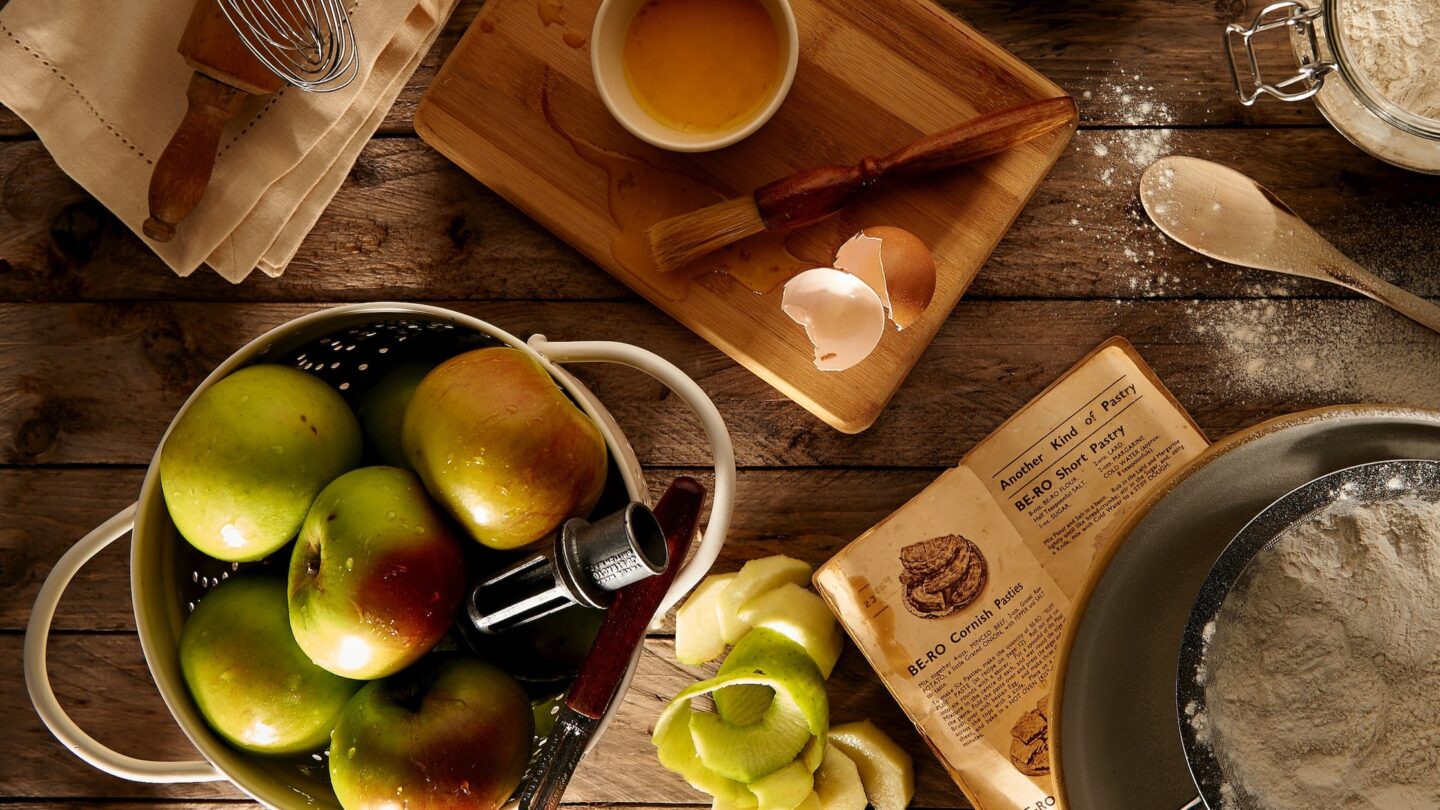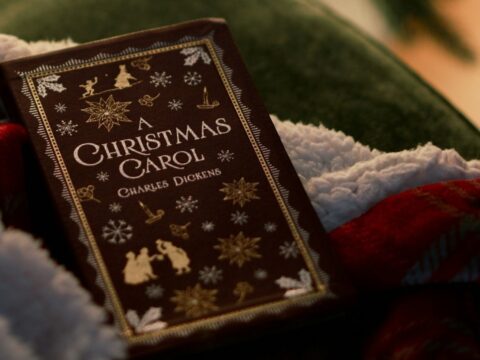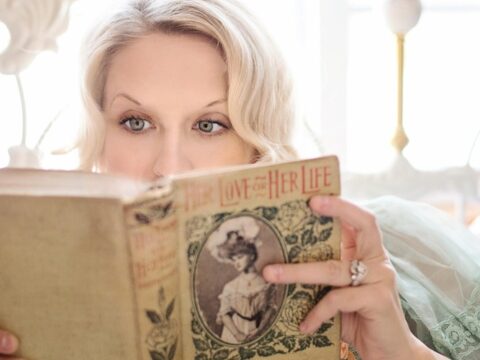This post has been a long time coming, but it is time for my official review of The Brothers Grimm Cookbook by Robert Tuesley Anderson. How did I stumble across this literary gem? Well, it was a Christmas present that I’ve been meaning to dive into for months. In the throes of being pregnant this year, culinary projects haven’t really been on the menu for me. So when the mood suddenly struck me to cook, I rushed to open up The Brothers Grimm Cookbook and see what fairy tale–inspired adventures awaited me.
Fairy Tales and Food Just Go Together
I’ve written before about how all fairy tales are centered on hunger. Opening up The Brothers Grimm Cookbook felt like a delicious second act to my first article. I didn’t realize that this book would contain as much storytelling and fairy tale bonus content as it does, but let’s just say that there’s way, WAY more than simple recipes here.
Firstly, Robert Tuesley Anderson appears to be a literature enthusiast. (For the record, he does not have ties to the famous Hans Christian Andersen. This guy is Scottish rather than Danish.) There’s very little information about Anderson online, but I quickly discovered that this book is part of a series of cookbooks based on famous authors like Jane Austen and Tolkien. Before diving into his recipes inspired by the Grimms, Anderson presents his thesis for this cookbook in the introduction:
The Grimms’ Tales have an earthiness that keep them tethered to the real world. The protagonists are often hungry and poor and . . . must hone their wits if they are to flourish. Even the rich—the kings, queens, princesses, and merchants—have problems with which we can empathize: difficult family relationships, childlessness, loneliness, fear of getting older, a desire for love and happiness . . . The English novelist Angela Carter (1940–92) captures their nitty-gritty realism thus: “A fairy tale is a story in which one king goes to another king to borrow a cup of sugar.”
Carter’s “cup of sugar” draws attention to another of the earthier aspects of the Grimms’ Tales that can easily be overlooked—their preoccupation with food.
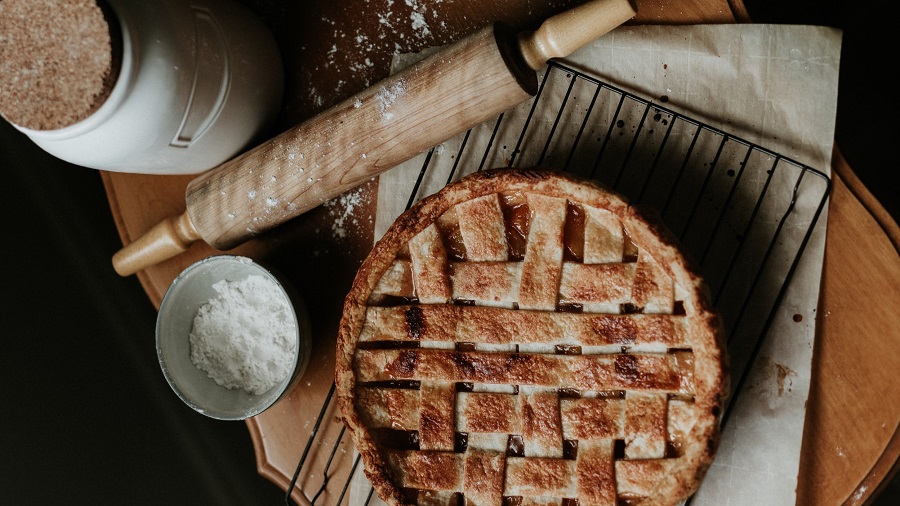
Anderson Takes Us on a Tasty Journey
I particularly enjoyed how Anderson organizes The Brothers Grimm Cookbook. There are six sections of recipes: breakfast, bread and butter (which also covers stock and gravies), appetizers, entrees, drinks, and dessert. Anderson himself is our narrator going on a fairy tale adventure. As he introduces each realm of food, he narrates his journey of preparing to embark, setting off into the dark woods, feasting at Grandma’s house, and buttoning up his happily ever after with a sweet conclusion.
The whole presentation is both charming and educational, and this book really captures both the relatable nature of fairy tales and Anderson’s passion for them. The Brothers Grimm Cookbook is rife with scrumptious historical details that even I had never heard before. Anderson writes about many of the food staples of peasant life: eggs, beer, beef, butter, pancakes, and much more. He also covers the historical events that influenced the hunger of Germany and famous fairy tales like Hansel and Gretel. Plus he covers the wonderful symbolism of various types of food and the kitchen itself in old stories . . .
At the opposite end of [the fairy tale forest] is the kitchen, the very heart of the home—a place, in the best of all possible worlds, of warmth, love, and safety. It is the space, too, of nourishment, signaling the presence of the mother . . . Aschenputtel (the German Cinderella) sleeps by the kitchen hearth, among the ashes, not simply because of her lowly status in the household after her father’s remarriage, but because there she is closest to her dead mother. Warmed by the dying embers . . . she feels nurtured and comforted.
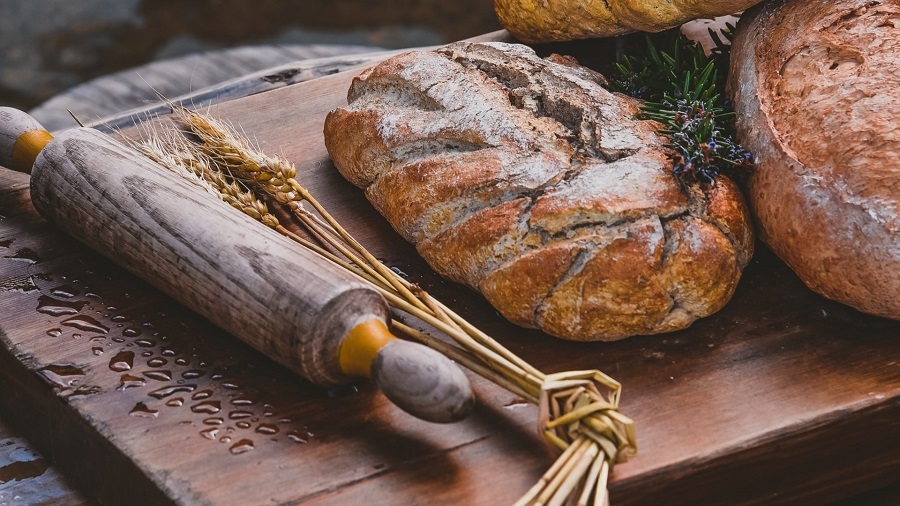
Anderson Dives Nice and Deep into the Fairy Tale Library
Every single recipe is inspired by various tales in the Grimms’ collection, and I was particularly impressed by his range of stories. We’ve got the well-known entries like Cinderella, Hansel and Gretel, and Little Red Cap (a.k.a. Little Red Riding Hood). But Anderson also pulls out so many delightfully obscure fairy tales that even I’ve never heard of. Bravo, sir! All of these details were fascinating to read about, but I admit that I chose the four recipes I made purely based on what my pregnant tummy wanted to eat. Sue me.
So what did I end up sampling for this post? After combing through the book, two entrees struck my fancy immediately, and so did a particular appetizer in the “Crumbs & Nibbles” section of The Brothers Grimm Cookbook. Then I selected the most delectable-sounding dessert I could find because OF COURSE. Please forgive me for not including complete recipes for copyright reasons, but I highly encourage you to check out The Brothers Grimm Cookbook for yourself!
Dish #1: Brier-Rose’s Garlic Butter Stuffed Chicken
Ooooooohhh Nelly, we started off strong! And also complicated. I didn’t realize until I was standing in the kitchen, ingredients surrounding me, and already hungry that I’d chosen a fairly complicated recipe to make. Anderson assures us in his introduction that all his recipes “can be easily prepared,” but I beg to differ, sir! Still, I have no regrets after how this dish turned out.
This chicken is inspired by the tale of Sleeping Beauty and her sleeping court. On his way inside, the prince spies the sleeping cook and a maid about to pluck a black chicken. Anderson muses, “As the spell is broken and the palace and its occupants return to life, we may well wonder what dish the cook went on to prepare with the chicken. Well, here’s our idea . . .”
Anderson’s entree is a one-pot chicken recipe of four stuffed chicken breasts on a bed of beans. Unfortunately I used white wine vinegar in the recipe rather than actual white wine—a mistake I’ll be sure not to make again! This made the beans bitter, but thankfully it did not spoil the radiance of the chicken. Seriously, this chicken was DIVINE. Beautifully moist, stuffed with creamy, lemony, garlicy perfection, and topped with toasted bread crumbs. An absolute success and one that Andy and I plan to make again.

Dish #2: Potato Dauphinoise
My first impression of this recipe is that it sounded entirely too French to belong in this German-inspired book. My second impression is that it sounded DELICIOUS and I was definitely making it.
Anderson writes an entire section about the humble potato in Europe, and apparently this recipe was inspired by the obscure tale “The Master Thief.” This antihero returns to his peasant home a rich man after years of thievery. His parents don’t even recognize the young aristocrat at their door, but he requests his mother’s delicious potato dish. I think it was this collision between humble beginnings and rich finery that inspired this recipe of elevating the lowly potato into its fanciest form.
Similar to potatoes au gratin, potato dauphinoise is apparently “the undisputed prince of potato dishes.” I have to agree. This recipe involves the thinnest potato slices possible layered in a casserole dish and seasoned with salt, pepper, and nutmeg of all things. Add heavy cream, garlic, and a glorious Gruyére cheese from Switzerland, and you got yourself potato heaven in a dish.
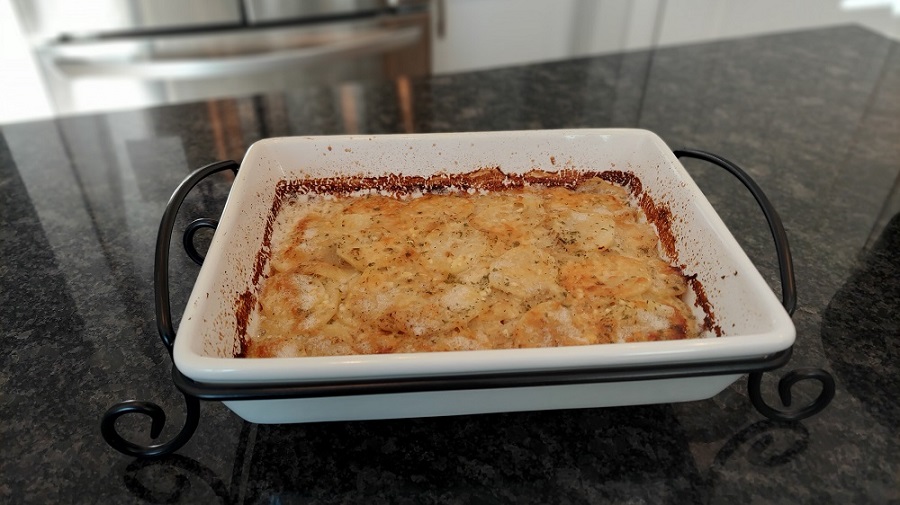
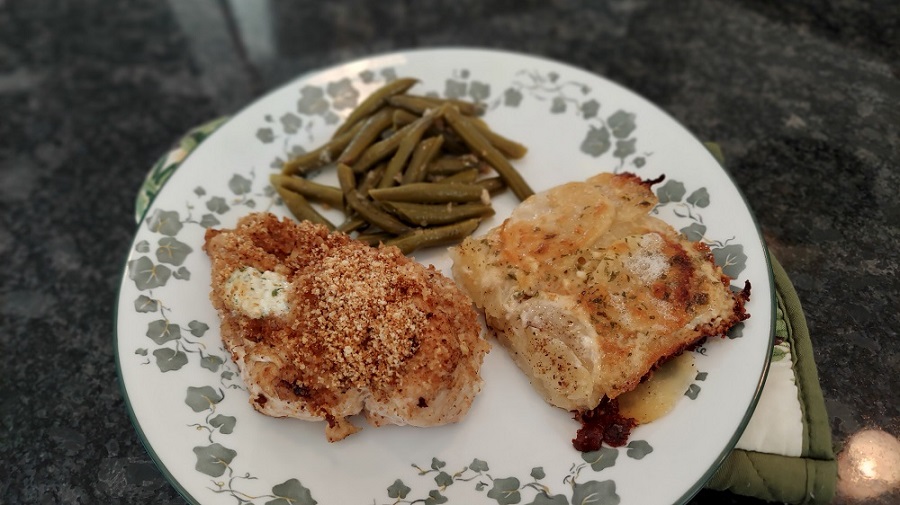
Dish #3: Pork and Apple Balls
Something of the importance of pigs is reflected in the Grimms’ tale “Hans in Luck,” in which the titular, none-too-clever hero is very proud of the “fine fat pig” he has swapped for a cow and is driving along the road. He is only tricked into bartering it for a goose when he is told a local squire has had a pig stolen from his sty and that [Hans] will likely be accused of stealing it and thrown into a pond. Here is a pork recipe that Hans could have made . . . if only he hadn’t been such a fool!
This little appetizer sounded delightful, so I gave it a whirl. It’s a pretty easy recipe of grated apple, onion, ground pork, and bread crumbs shaped into meatballs and fried in a pan. I admit that of the four recipes I tried, this was definitely my least favorite, but I also have several ideas of how to improve it.
First of all, there was no seasoning whatsoever in the original recipe. I assumed this would allow the apple to take center stage, but instead the onion completely took over and the meatballs tasted like onion-flavored meat. Not bad, but nothing to write home about either. I’d definitely suggest seasoning the pork to your liking, adding a sweet dipping sauce, and also choosing a sweeter apple than Granny Smith. Just my thoughts.
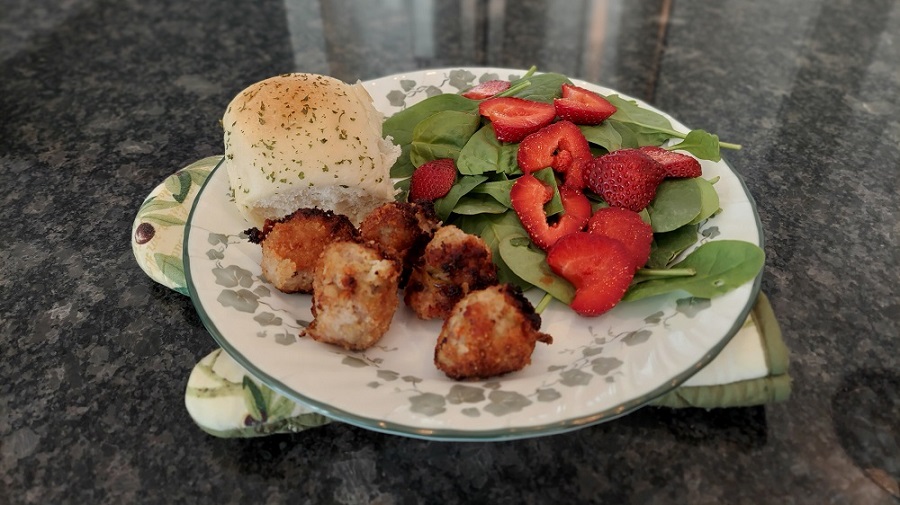
Dish #4: Apple and Almond Pie
Apparently this dessert is inspired by “The Juniper Tree,” which in some Victorian translations is known as “The Almond Tree.” Anderson’s pie recipe is inspired by this fairy tale’s opening image: a mother paring an apple under an almond tree accidentally cuts herself and wishes for a child “as red as blood, and as white as snow!”
Once again, this turned out to be a much more complicated recipe than anticipated (why, man?!). But it also tasted AMAZING. I cheated a bit by using premade pie crust, but hey, the recipe said I could. The fluffy center of the pie contains apples, almond flour, eggs, lemon juice, and sliced almonds. This nutty, surprisingly unsweet base is the perfect canvas for the recipe’s rich homemade chocolate sauce and a scoop of double-churned vanilla ice cream to complete the delicacy.
My review of the apple and almond pie? It truly was the happily ever after of my culinary adventure.

The Brother’s Grimm Cookbook Is Definitely Worth a Try
If you’re game, I can’t think of a reason not to open up this little treasure. Even if you’re the worst cook ever, you can still browse the beautiful pictures, learn about some fairy tales, and make yourself hungry while reading about fairy tale food. ❧

